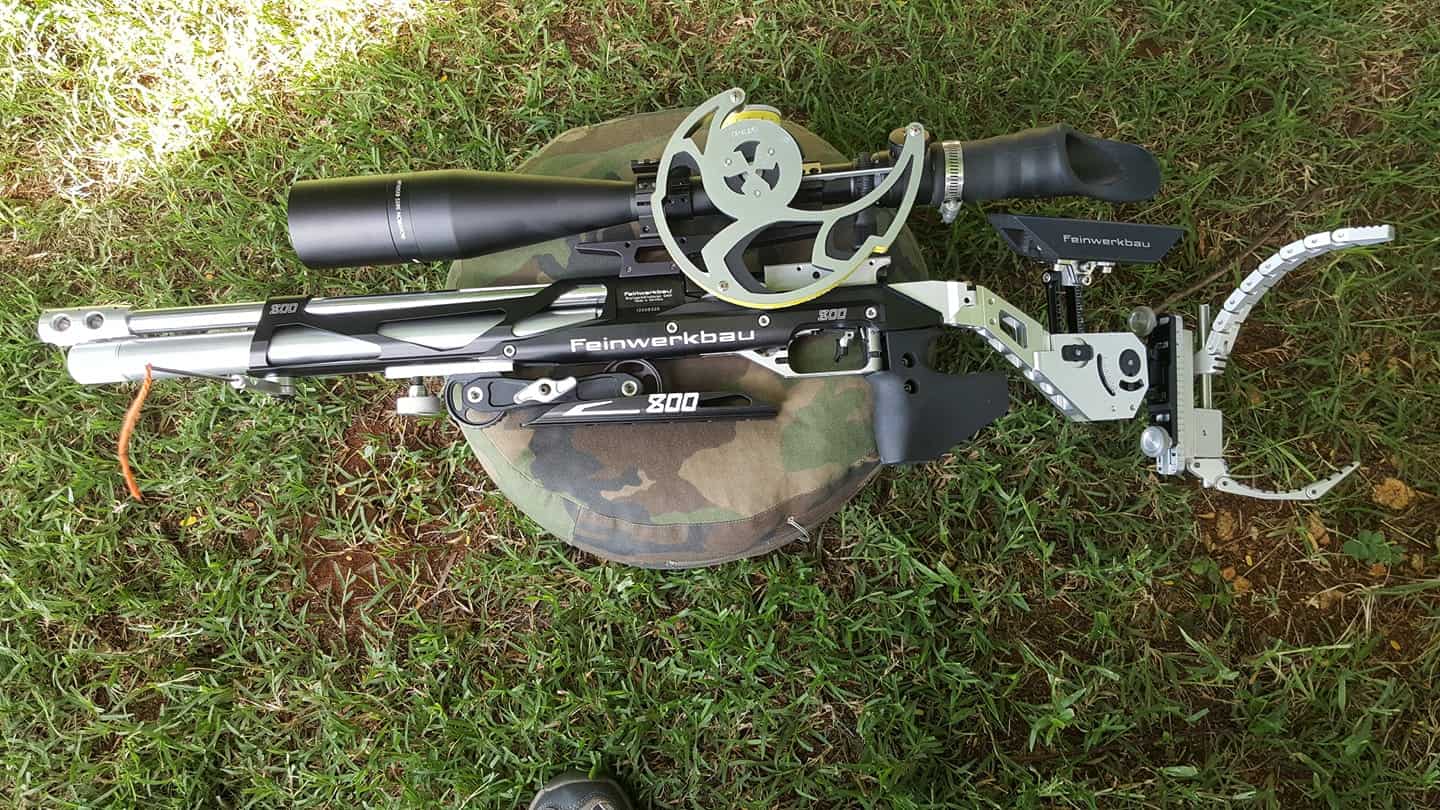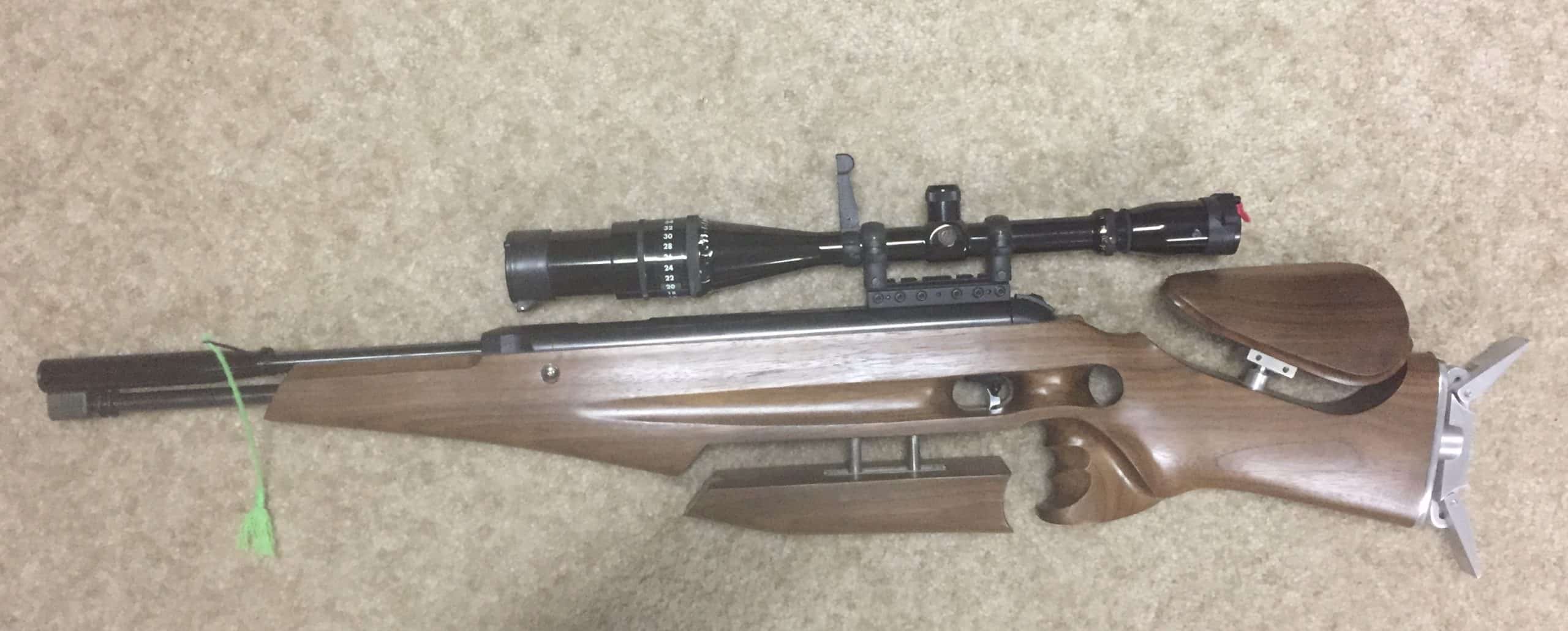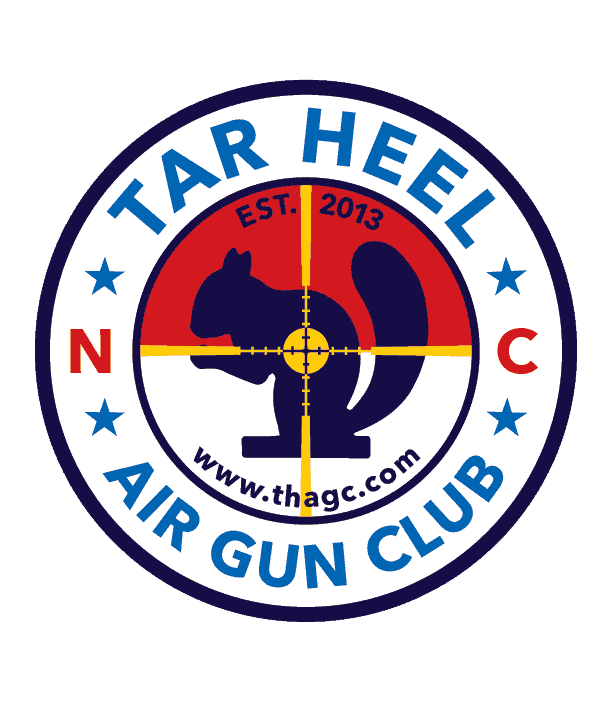The Field Target Discipline
Precision Air Rifle Marksmanship
A Typical Match Course
Competitors shoot in squads on a course made up of several lanes.
Each lane holds two or more targets from 10 to 55 yards.
One point is scored when the shooter hits
the circular strike zone in the metallic silhouette.
Learning the Game
The following explanation isn’t set in stone. For example, should a shooter be proficient in visualization techniques from an earlier interest, they will probably be mixing first and third level skills in their training from the start.
Technical
The basic Field Target skill sets are target rangefinding, understanding ballistics, ergonomics (fitting your rifle to your body), and mastering the shooting positions.
Rangefinding is done with the riflescope. It is an art by itself.
Ballistic trajectories can be determined in the field or with software.
The basic ergonomics of shooting, such as position building, rifle fit, and Natural Point of Aim (NPA) are learned through practice.
The seated position used in Open and WFTF division can confound new shooters. It takes practice to figurte out what works for you. Here’s a link to some pointers:
These skills are the first learned by beginners and are mostly technical.
Sorcery
Mid level fieldcraft skills are wind shooting, rangefinding, and angle shooting ( elevated and depressed targets). These skill sets are one part technical and nine parts alchemy.
Since no wind flags are posted on the course wind shooters learn to read the angle and direction of wind. Shooters must learn to feel the wind, watch movement of vegetation, test for target reset string deflection, watch for mirage ( the heat waves you see in your rifle scope), and observe the wind flag attached to your rifle. Since conditons change quickly, you learn to shoot with both eyes open, looking for clues to wind change even while breaking your shot.
Target rangfinding progresses in the mid level from basic reading to and understanding of how light and temperature affect the ability of your optic to measure range.
Remember, there is no one optic that is best for everyone. I know shooters who have traded $4,000 scopes for an optic one fourth the cost because they could better determine range with the less expensive scope.
Zen
Shooting is 90% mental.
New shooters often remark that shooting is relaxing. The concentration necessary requires a singular focus that clears the mind. It is no accident that top marksmen use visualization with relaxation and focusing techniques to perform their best.
One of the best Field Target marksmen in the country, when moving from the Hunter division to World Field Target Federation spent six months in shooting practice perfecting his shooting positions. Once done, most of his pre-match prearation is visualization. You’ll rarely see him taking more than ten warmup shots prior to a match. He spends his prematch time focusing on putting himself “in the zone” and he monitors how he feels during the match. If he feels himself loosing concentration, he focuses to put himself back in the zone.
This subject is too involved to cover here. Two publications follow for those wanting to explore the subject in greater depth.
The Bullseye Mind, Raymond Prior, PhD.
Position Rilfe Shooting, Pullam & Hanenkrat
…….. we always find time for fun!
How Can I Compete?
Four Participation Levels
Local: Participate in one day matches at nearby clubs.
Regional: Take part in multi-day Grand Prix matches in different states.
National: We get together every year for a national match!
International: The World Field Target Competiton is open to qualifying Team USA shooters (WFTF Division Only) in a different county annually.
Three Divisions
Hunter
Open
Harnesses Allowed
WFTF
(Int’l.)
Harnesses Prohibited
Two Classes
You may shoot either of the following classes in any division.
Precharged Pneumatic (PCP): Pellet propelled through compressed air.

Springer: Pellet propelled by air compressed by a spring released during the firing cycle.

